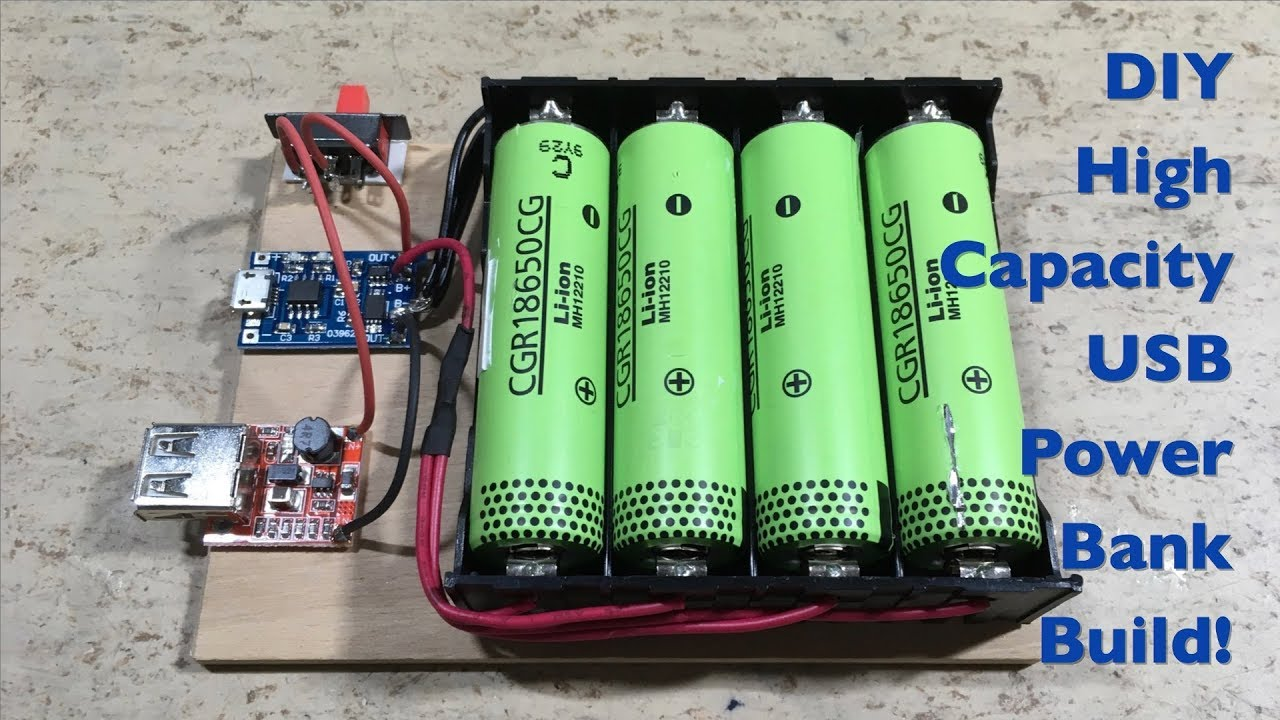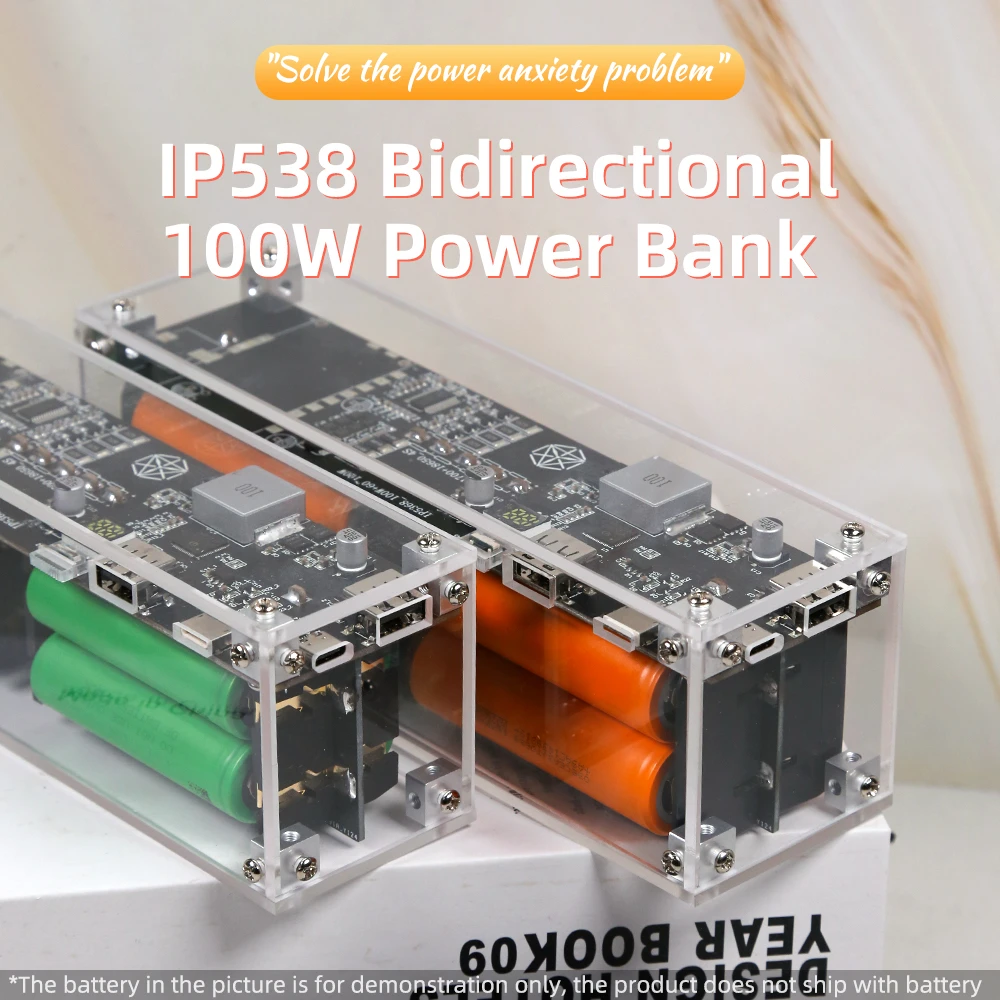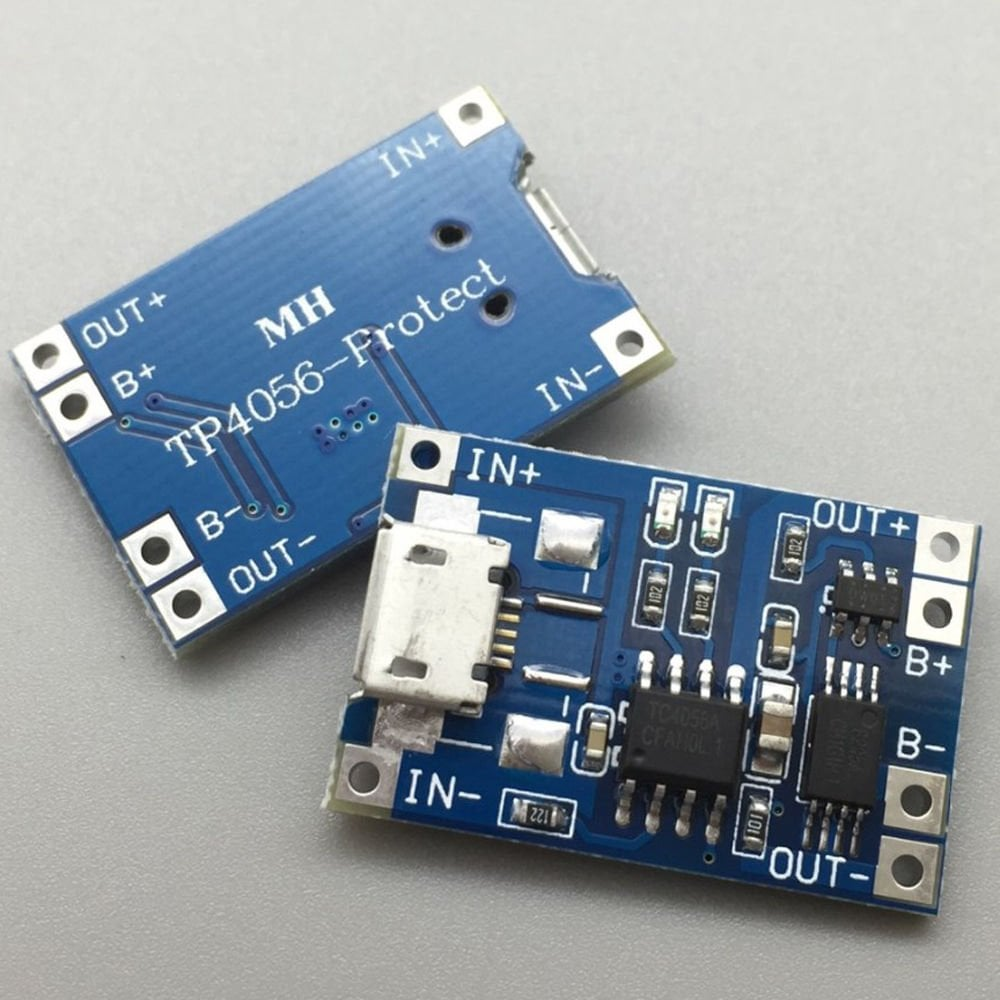Creating a DIY portable power bank is an exciting venture that not only saves money but also contributes to sustainability. With the rise of discarded electronics, particularly disposable vape devices, savvy DIY enthusiasts like Chris Doel are turning to salvaging lithium-ion cells to craft powerful and efficient power banks. These cells, often found in abundance on the streets or offered by vape shops, can be transformed into a robust portable charging solution. Learning how to build a power bank from these recyclable components makes for a rewarding project, allowing you to reuse resources that might otherwise end up in landfills. So, if you’re looking for an innovative way to harness the power of recycled materials, joining the movement of lithium-ion battery recycling through DIY projects could be your next best endeavor.
Building a personal power source has never been more accessible, especially with the influx of disposable vaping products that many of us encounter daily. The process of converting these single-use devices into functional energy banks is not only resourceful but also a clever example of modern repurposing. By utilizing components commonly found in these vapes, enthusiasts can create reliable energy solutions that cater to their mobile charging needs. This trend towards recycling old batteries not only supports renewable practices but also opens doors to countless inventive projects. Whether you’re interested in crafting a simple charger or a more complex energy storage system, the world of DIY energy solutions offers exciting possibilities.
How to Build a Power Bank from Disposable Vapes
Building a DIY portable power bank from disposable vapes is an innovative project that combines creativity with environmental sustainability. The process starts with the careful salvaging of lithium-ion cells from these single-use devices. With an estimated 260 million disposable vapes discarded each year, there’s a wealth of resources available for tech enthusiasts looking to create something useful from what would otherwise be waste. After collecting the vapes, the first step involves extracting the lithium-ion cells, which can be done safely with the right tools and technique.
Once you have gathered enough cells, the real fun begins! To construct the power bank, you will need to design a reliable enclosure, typically utilizing a 3D printer for precision. The enclosure should securely hold all the cells in place while allowing for easy access to swap out individual cells when they wear out. By following a detailed tutorial or guide, you can ensure that each cell is properly connected using printed circuit boards (PCBs) that manage the power distribution and charging process effectively, turning salvaged materials into a functional energy source.
The Benefits of Salvaging Lithium-Ion Cells
Salvaging lithium-ion cells from disposable vapes is not only a cost-effective solution for those wanting to build their own power banks but also significantly benefits the environment. These vapes are typically single-use, contributing to a considerable amount of electronic waste each year. By extracting and repurposing the cells, you contribute to the recycling effort, reducing the number of hazardous materials that end up in landfills and promoting a more sustainable lifestyle. Utilizing salvaged materials not only helps in saving money but also addresses the problem of increasing electronic waste.
Moreover, the skills learned through this salvaging process can be applied to other projects, such as creating custom power sources for electronics or even DIY e-bike batteries. It’s a growing trend among tech enthusiasts and eco-conscious individuals to find creative ways to utilize discarded materials innovatively. This hands-on approach not only fosters creativity but also builds valuable skills in electronics and engineering, providing a deeper understanding of how lithium-ion batteries work.
Understanding Lithium-Ion Battery Recycling
Lithium-ion battery recycling is a crucial aspect of reducing the ecological impact of electronic waste. The process involves recovering valuable materials such as lithium, cobalt, and nickel, which can be reused in the production of new batteries. As global battery production rises, recycling becomes increasingly essential to conserve resources and minimize pollution. By salvaging lithium-ion cells from disposable vapes, individuals contribute to this recycling ecosystem and promote a circular economy that emphasizes reusing materials rather than manufacturing new ones.
Not only does recycling help in resource conservation, but it also mitigates the environmental hazards posed by improper disposal of batteries. For instance, lithium-ion batteries can leak toxic substances if not handled correctly. By participating in recycling and salvaging initiatives, individuals not only reduce the risk of landfill pollution but also raise awareness about the importance of responsible electronic waste management. This educational aspect of recycling cannot be overstated, as it encourages more people to think about their consumption habits and the lifecycle of the products they use.
Designing Your DIY Portable Power Bank
When designing a DIY portable power bank, functionality and safety should be the primary concerns. Begin by ensuring that the enclosure can accommodate all salvaged lithium-ion cells securely; precision is key to prevent any contacts that could lead to short circuits. The design should incorporate features such as spring terminals to eliminate the need for soldering, which can be difficult for beginners. Simple and intuitive designs help facilitate easy assembly and maintenance, making the process enjoyable for those tackling this DIY project for the first time.
Additionally, effective design incorporates features like cell balancing mechanisms that ensure all cells reach a similar voltage during the charging process. This balancing is crucial for the longevity of your power bank, as it prolongs the life of the individual cells. Using PCBs in your design can help streamline the workflow, allowing you to focus on the creative aspects of the project while still prioritizing safety and reliability. Each aspect of your design should serve a dual purpose: to enhance performance while also making the power bank robust and easy to use.
The Future of DIY Power Banks
The future of DIY power banks looks promising, driven by the rising trend of sustainability and self-sufficiency among tech enthusiasts. As society increasingly shifts towards environmentally friendly practices, the idea of repurposing materials from disposable vapes into functional devices like power banks becomes an attractive option. This movement not only provides a practical solution for energy storage but also encourages a new generation to engage in creative problem-solving and electronics projects. The DIY community is expected to grow as more individuals become aware of the environmental impact of electronic waste.
Moreover, advancements in technology and battery management systems are likely to enhance the DIY experience. Improved tools, tutorials, and community support networks will provide aspiring builders with the resources they need to succeed in their projects. As methods for salvaging and recycling lithium-ion batteries become more refined, it may lead to the creation of even more efficient and versatile DIY power banks. The space is ripe for innovation, and those willing to experiment and learn will contribute to a future where sustainability and tech ingenuity are seamlessly intertwined.
Exploring the Mechanics of Lithium-Ion Batteries
Understanding how lithium-ion batteries work is essential for anyone interested in electronics and DIY projects. These batteries operate on the principle of lithium ions moving between the anode and cathode during charging and discharging cycles. This movement generates electrical energy, making them highly efficient for various applications, from powering mobile devices to providing energy solutions for DIY power banks. An in-depth knowledge of these mechanics can significantly enhance the performance and reliability of the power bank you build.
Furthermore, comprehending the internal structure and chemistry of these batteries allows you to make informed decisions about cell sourcing, assembly, and recycling. For instance, knowing that many disposable vapes use similar cell types can help streamline your collection process and ensure compatibility within your power bank project. This foundational knowledge also empowers builders to troubleshoot issues that may arise during the usage of their DIY power banks, ultimately resulting in a more enjoyable and educational building experience.
Tips for Safe Cell Extraction
Extracting lithium-ion cells from disposable vapes can be a rewarding but delicate task, requiring careful attention to safety protocols. Before diving into this process, ensure you equip yourself with safety goggles and gloves to protect against any potential hazards, such as sharp edges or battery leaks. A specialized extraction tool or a simple screwdriver can be handy for opening the vape devices without damaging the cells, ensuring that you salvage usable materials without causing injury to yourself.
It’s also important to handle the cells with care during the extraction process. Avoid puncturing or shorting the cells, as this can lead to thermal runaway or fire hazards. Conducting this task in a well-ventilated area is advisable since damaged cells may emit hazardous fumes. Familiarizing yourself with the structure of various vape models prior to extraction can enhance your effectiveness, making the process smoother and more efficient. By adhering to safety tips and developing good practices, you can enjoy a hassle-free salvaging experience.
Building a Power Bank from Vapes: Step-by-Step Guide
Creating a power bank from disposable vapes is a fun and functional project that can empower you to take control of your energy needs. Start by collecting at least 35 identical lithium-ion cells, as uniformity is key for optimal performance. Once you have gathered the cells, set up a clean workspace with ample room to function. The first step in the building process is to disassemble the vapes carefully and extract the cells without damaging them to ensure they remain functional. Following extraction, it’s essential to test the cells to confirm they are in working condition.
After confirming that all cells are operable, the next step is designing your power bank’s enclosure. You can use 3D printing technology to create a customized case that can secure the cells effectively. Ensure the design includes connection points for the PCBs and facilitates easy swapping of cells. Follow the wiring schematics to connect the cells and PCBs properly, ensuring that balancing circuits are in place to maintain equal voltage across all cells. Once assembled, test your power bank with various devices to ensure it meets your intended performance goals, creating a powerful resource from materials that would otherwise have been discarded.
Maximizing Efficiency in DIY Power Bank Projects
Maximizing efficiency in DIY power bank projects involves optimizing both the design and the assembly process. Selecting high-quality cells from your salvaged lithium-ion batteries can significantly influence the performance of your power bank. Always test the cells for their capacity and health before integrating them into your project, as weaker cells could compromise the overall functionality of the power bank. Furthermore, utilizing circuit boards that feature built-in cell balancing features can help ensure that each cell operates optimally, which is crucial for both performance and longevity.
Moreover, consider employing energy management features in your design, such as LED indicators that monitor charging status and power levels. This can help users utilize the power bank more effectively, preventing overcharging and extending the lifespan of the lithium-ion cells. Another aspect to consider is choosing materials and components that are compatible, both in terms of size and functionality. By focusing on these elements, you can create a robust, efficient power bank that stands the test of time and offers an environmentally friendly solution for your energy needs.
Frequently Asked Questions
What is a DIY portable power bank and how do I create one using salvaged lithium-ion cells?
A DIY portable power bank is a custom-built power bank made from salvaged lithium-ion cells, typically sourced from disposable vapes. To create one, gather at least 35 identical and healthy cells from vapes, then use a compatible 3D-printed enclosure and two PCBs for connecting them. This process allows you to build a robust power bank that can be easily maintained by swapping out cells when needed.
How can I salvage lithium-ion cells from disposable vapes for my DIY portable power bank?
To salvage lithium-ion cells from disposable vapes, collect used vapes from the ground, bins, or directly from vape shops willing to donate them. Carefully extract the cells, as this constitutes the most crucial part of building your DIY portable power bank. Ensure you have a good understanding of safe extraction techniques to avoid damaging the cells.
What are the advantages of using a power bank from vapes over traditional power banks?
Using a power bank from vapes has several advantages: it’s cost-effective as you’re repurposing discarded materials, it can be customized to fit your power needs, and it reduces electronic waste by giving new life to lithium-ion cells that would otherwise be thrown away. This DIY approach is also personally satisfying, as you are creating something functional from rubbish.
Is it safe to build a DIY portable power bank from lithium-ion cells found in disposable vapes?
Yes, it can be safe to build a DIY portable power bank from lithium-ion cells found in disposable vapes, provided you follow proper safety precautions during extraction and assembly. Ensure that the cells are in good condition and balanced before use. It’s essential to use appropriate protective gear and handling techniques to avoid any risk of short circuits or battery failure.
What tools and materials do I need to build a DIY portable power bank from salvaged cells?
To build a DIY portable power bank from salvaged lithium-ion cells, you will need the following tools and materials: a 3D printer for the enclosure, two PCBs for cell connections and management, spring terminals for easy cell insertion, and a soldering kit for final assembly. Additionally, you will require protective gear when extracting the cells.
How does lithium-ion battery recycling relate to creating a DIY portable power bank?
Lithium-ion battery recycling is closely related to creating a DIY portable power bank as it emphasizes the importance of reusing materials. By salvaging lithium-ion cells from disposable vapes, you’re effectively participating in recycling efforts, reducing electronic waste, and promoting sustainable practices. This DIY project turns waste into a valuable resource, contributing to environmental conservation.
What can I power with my DIY portable power bank made from salvaged cells?
Your DIY portable power bank can power a wide variety of devices, including smartphones, tablets, cameras, and even small appliances, depending on the capacity of the lithium-ion cells used in your build. With 35 cells, your setup can generate significant power to charge multiple devices on the go.
Can I customize my DIY portable power bank from disposable vapes?
Absolutely! Customizing your DIY portable power bank from disposable vapes allows you to tailor it to your specific needs. You can adjust the number of cells for desired capacity, modify the enclosure design, and choose features such as additional USB ports or integrated LED indicators for charging status.
| Feature | Details |
|---|---|
| Project Overview | DIY portable power bank using salvaged lithium-ion cells from disposable vapes. |
| Source of Cells | Cells can be salvaged from disposable vapes found on the ground or retrieved from vape shops. |
| Construction | Requires 35 matching lithium-ion cells and a 3D-printed enclosure with PCBs for connectivity. |
| Design Features | Includes ‘wings’ to secure cells and spring terminals for easy assembly. |
| Cell Balancing | PCBs ensure all cells are balanced during construction for optimal performance. |
| Sustainability Aspect | Reduces waste by repurposing cells from millions of disposable vapes. |
| Alternative Uses | Salvaged cells can also be used to create a DIY e-bike battery. |
Summary
Creating a DIY portable power bank is a rewarding and eco-friendly project that not only provides a practical charging solution but also promotes sustainability by repurposing lithium-ion cells from disposable vapes. With the right materials and some creativity, you can harness the power of these salvaged cells to build a robust power bank capable of powering various devices. Chris Doel’s innovative approach showcases how we can transform waste into valuable resources while efficiently managing tech waste.



